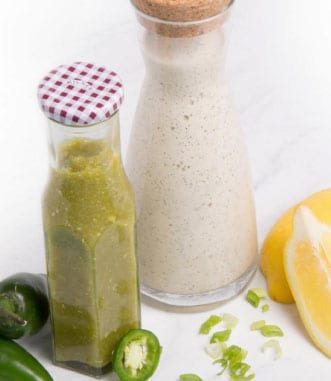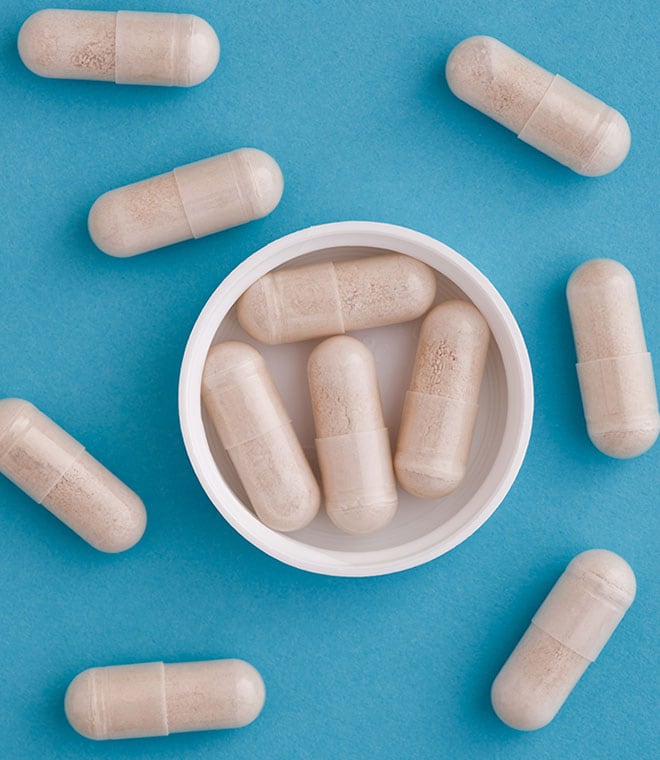Wellness
Probiotic yogurt: A guide
By Danielle Butbul, MPH, RDN Apr 22, 2024 • 8 min
Yogurt is often recognized as good food to include in the diet because of its link to numerous health benefits, such as weight management and reduced risk of cardiovascular disease and type 2 diabetes.
Lately, this natural food has gained greater popularity, due to its probiotic content and the growing interest in the role of probiotics in overall health. In addition to probiotic supplements, there’s been a boom in the variety of yogurt products available, and it can be challenging for us as shoppers to know which yogurt has the added benefits we're looking for. If you're interested in learning about probiotics in yogurt and what to look for when choosing yogurt in the store, look no further.
Is yogurt a probiotic food?
Yes, yogurt is a probiotic food. Yogurt is a fermented food that's made by adding live microbes to milk. Using cow’s milk is most common, but there are also yogurts that are made by using different bases for fermentation, such as goat and sheep milk, as well as milk alternatives like soy, coconut and almond. However, what qualifies a food as yogurt is not the base that is fermented—it's the bacteria used to ferment that are important.
For a food to meet the standards of identity for yogurt, it must be made using the bacteria Streptococcus thermophilus and Lactobacillus bulgaricus. These cultures feed off the base they are added to, and as they reproduce and grow in number, they thicken. This results in the recognizable creamy texture and creates the classic tangy, sour flavor of yogurt.
These friendly bacteria are also what make yogurt a probiotic food. Both Streptococcus thermophilus and Lactobacillus bulgaricus are probiotics, which may help your body digest lactose (the natural sugar in milk and milk products). They may also help reduce the risk of antibiotic-associated diarrhea and improve symptoms of irritable bowel syndrome (IBS), as well as several other digestion-related conditions.
After these cultures are added to the milk, or other food bases, and the fermenting process is complete, the product doesn't go through any more processing that could damage the microbes. So the friendly bugs are usually still alive when you bring the yogurt home from the store. Because most yogurt contains live, active and beneficial microbes, it's considered a probiotic food. Yogurt also provides many of the essential nutrients your body needs to be healthy, such as protein, calcium, B vitamins, phosphorus and zinc.
Are there any other probiotics in yogurt?
While yogurt must be made by using the two bacteria mentioned above, yogurt manufacturers can include additional bacteria in their yogurt products. Different combinations of bacteria, in addition to other ingredients like fruit and sugar, all contribute to the various flavors, consistencies and health benefits of yogurts that we find in the dairy aisle. For example, many yogurt-making companies will add Lactobacillus acidophilus to their products because of its potential health benefits, which may include helping with specific types of diarrhea and bacterial vaginosis (a type of vaginal inflammation). Some additional health benefits of this culture that are still being researched include:
- Improving symptoms of lactose intolerance
- Restoring a healthy balance of good and bad gut microbiota (all the normal microorganisms that live in your gut)
- Reducing cholesterol levels
- Lowering the risk of colon cancer
- Reducing the risk of gastrointestinal ulcers
Does all yogurt have probiotics?
Yogurt has natural live and active cultures, but not all yogurt contains added probiotics.
The good bacteria in yogurt must be alive at high enough levels to provide a potential health benefit. Some yogurt products are heat-treated after the culturing process, which damages or destroys the microbes. Yogurts are processed this way in order to provide for a longer shelf life.
Manufacturers will usually say on their labels if probiotics are in the yogurt (listing the specific strains on the ingredients list). You might also see a "Live and Active Cultures" seal on packages. This voluntary seal can go on yogurt products that meet specific criteria indicating a significant amount of live and active cultures are present at the time the yogurt is produced.
Does Greek yogurt have probiotics?
Yes, most Greek yogurt contains probiotics, as it's made in the same way as regular yogurt, using the same strands of cultures.
The major difference between Greek yogurt and regular yogurt is that it's strained three times (removing more liquid) instead of two times with regular yogurt. This creates a thicker, creamier texture, and a product with higher protein and less sugar content.
Like regular yogurt, some brands apply heat to their Greek yogurt products after the live cultures have been added, destroying the microbes.
What are the key things I should consider when choosing probiotic yogurt in the store?
The three main things to consider when choosing probiotic yogurt are:
- Whether there are live active cultures. When it comes to getting probiotics from yogurt, this is the first thing you should look for. If there are significant enough levels of probiotics in a yogurt, the container will most often indicate it on the label.
- Which probiotics are present. The more cultures that are listed, the more variants of probiotics are present in the yogurt. While different probiotics are linked to different health benefits, the specific benefits of one strain or another are still being researched. It may be beneficial to consume a mix of various probiotics. Many yogurts contain more than one strain of probiotic, so check the label for more information.
- Sugar content. Many yogurts will have added sugars to offset the product's tartness. While a small amount of sugar can help make the taste of yogurt more pleasant, we should limit added sugars to less than 10% of our total daily calories.
Choosing yogurts with lower levels of sugar, such as plain yogurts, or yogurts that are sweetened naturally with fruit are great options. Another way to better control sugar intake when it comes to yogurt is to buy plain-flavored yogurts and add your own sweetener from sources like honey or fresh fruit.
If you're feeling overwhelmed in the yogurt aisle, look first at whether the label indicates that there are live active cultures, and second, look for lower sugar options. Yogurt is one of the most reliable, safe and affordable sources of probiotics. Better still, all the varieties of flavor mean there will be something for everyone in the family to enjoy.
Clinically reviewed and updated April 2024.
- https://pubmed.ncbi.nlm.nih.gov/32447398/
- https://isappscience.org/for-scientists/resources/probiotics/
- https://fsi.colostate.edu/yogurt/
- https://www.gastrojournal.org/article/S0016-5085(20)34729-6/fulltext?referrer=https%3A%2F%2Fpubmed.ncbi.nlm.nih.gov%2F
- https://www.urmc.rochester.edu/encyclopedia/content.aspx?contenttypeid=19&contentid=Lactobacillus
- https://www.accessdata.fda.gov/scripts/cdrh/cfdocs/cfcfr/CFRSearch.cfm
- https://www.idfa.org/live-active-cultures-seal
- https://isappscience.org/for-consumers/learn/faqs/#toggle-id-3
- https://www.ncbi.nlm.nih.gov/pmc/articles/PMC9455928/pdf/foods-11-02691.pdf
- https://www.mayoclinichealthsystem.org/hometown-health/speaking-of-health/an-introduction-to-probiotics
- https://www.hsph.harvard.edu/nutritionsource/food-features/yogurt/




